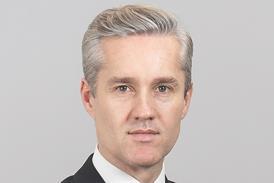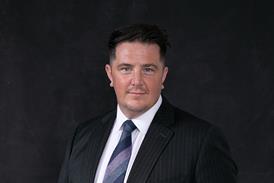In Kingdom, a TV drama, Stephen Fry plays Peter Kingdom, a local solicitor with a natural human and personal touch, going out of his way to help the locals in a small town in Norfolk. This idealised portrayal of life as a solicitor could not be further from the world in which many solicitors now need to operate, though there is something to learn from his empathetic manner.
The reality in many sectors of practice is a shrinking market, and involves cut-throat competition. Small to medium-sized firms face competition from Co-operative Legal Services, Halifax and Tesco’s online home selling service iSold. Meanwhile, magic circle firms expanding overseas are up against dominant players in national markets. To survive and prosper, firms increasingly need to find ways of standing out from the crowd.
Andrew Hedley of Hedley Consulting says: ‘If you pick half a dozen firms competing in the same sort of market, they all say the same things: that they are commercial and client focused, that they deliver on time and that they understand clients’ needs.’
He adds: ‘Because firms fail to differentiate they end up competing on price. When you talk to partners, this is their biggest challenge.’
Market positioningHence the growing interest in market ‘positioning’. That is to say, writes Maureen Broderick in her new book The Art of Managing Professional Services, ‘what the firm does, how it does it, and why it is different from other organizations’.
Research by Broderick shows that for 77% of professional services firm leaders, branding, marketing and sales – the means to achieve your ‘positioning’– were ‘at the top of their management agendas’.
For magic circle firm Allen & Overy, ‘positioning’ is a top priority. Richard Grove, marketing and business development director at A&O, says: ‘Marketing, business development and communications all form one function. They should all contribute to each other.’
High-profile deals undertaken by A&O, such as advising on the world’s first carbon-neutral city in Abu Dhabi or the largest IPO (the Agricultural Bank of China); the firm’s top ranking in graduate recruitment; and its staging of a production of Mozart’s The Magic Flute at the Glyndebourne Opera House with a cast and orchestra comprising A&O employees and alumni, ‘all build the brand and re-enforce its position in the market’, adds Grove: ‘We try and make sure our clients and prospective clients are aware when we are doing things that are different and advanced, and when we demonstrate leadership in a particular area.’
For mid-tier firms such as Addleshaw Goddard, it is all about business development (a posh word for sales, say pundits). Lance Sapsford, head of business development at the firm, explains: ‘The legal sector has traditionally been quite backward in relation to the way it has used marketing and a lot of it has been around the traditional event-driven, sponsorship-driven, advertising-driven – not particularly well-focused – activity.’ This is now changing, he says, with a ‘big shift’ away from traditional marketing approaches to business development.
He adds: ‘We spent the last five years or so concentrating on building up more business development-focused activities and deliberately playing down the use of more traditional channels such as advertising and sponsorship, because we prefer to engage more directly with clients and potential clients.’
For Sapsford, business development covers a number of things – targeting prospective clients, nurturing existing ones through account management, listening to and acting upon clients’ feedback, and helping clients ‘add value’ in ways that, he claims, other law firms do not.
For example, Addleshaw Goddard has developed a Client Development Centre, which provides support to clients’ senior in-house legal teams with customised legal training and updates, help and advice with secondments, and business-simulation training programmes, among other services. ‘It’s part-marketing and part-client interaction,’ explains Sapsford.
The firm, having honed its services in line with client needs, now feels confident about the message it wants to convey to the market, and is starting to look at using more ‘traditional’ marketing channels, such as a new website later this year, Sapsford says.
The power of the brandIn defining a brand, Broderick quotes DLA Piper global board chairman Frank Burch, who describes it as ‘the place you occupy in the consciousness of your constituents’.
For Broderick, in order to occupy that consciousness, legal firms need to identify just who their key constituents are by ‘profiling’ the buyers of services. However, this is not the general approach in the legal profession. ‘Solicitors tend to think of services from their point of view and not often enough from their clients’ perspective,’ notes Alastair Moyes, director of consultancy Marketlaw.
One firm that is breaking the mould is Taylor Vinters, a 30-strong partner firm with offices in London and Cambridge and annual revenues of £15m. ‘Our size puts us in one of the busiest ends of the legal sector,’ says business development director Matt Sullivan. ‘It’s the end where more law firms try to say why they are different, and it’s tough because over the years the whole sector has become very homogeneous. It’s been very difficult for clients to make reliable purchasing decisions because so many law firms look the same and feel the same and say the same thing.’
To stand out from the crowd, Taylor Vinters relaunched its website with the slogan ‘Lawyers who think like you’. Instead of the ‘classic matrix’ presenting a firm’s practice areas and sectors, the website, says Sullivan, focuses on the firm’s three types of client – businesspeople, private clients and charities.
Prospective punters find legal services relevant to their needs in just three clicks, and all the language is in plain English, explains Sullivan: ‘You can spend a lot of time on the website and you’ll still see that it speaks the client’s language wherever you are. We also tried to limit the amount of self-adoration seen on so many law firm websites.’ Expressions such as ‘technical excellence,’ for example, were avoided: ‘Ten years ago technical excellence was important but nowadays clients tell us that they just want law firms to create value and to solve their problems,’ he notes.
Viewing things from the client’s perspective permeates everything Taylor Vinters does. For example, at the firm’s events and conferences, partners make presentations to clients as if they were ‘from a bank or large accounting firm’ rather than being the ‘archetypal lawyer’. And they avoid legal jargon.
This has paid off, says Sullivan. Over the past 12 months sales through the website have increased by 75% and he claims that while some direct competitors have seen their revenues reduced by as much as 25% in the past couple of years, his firm’s revenues have held up.
Mishcon de Reya has been also working hard to cut a distinctive profile in the market. Its branding strategy revolves around the new slogan: ‘It’s business. But it’s personal.’ Elliot Moss, director of business development at the mid-tier firm explains: ‘The perception of our brand is that we are a law firm for private individuals, but the reality is that 90% of our revenue comes from the world of business.’
Mishcon’s high-profile private client work included the late Princess Diana’s divorce. However, it is the firm’s lawyers in corporate, employment, real estate and dispute resolution who are generating by far the most important share of revenues. The slogan, he explains, ‘brings together both a truth and an ambition’.
Moss explains that ‘the truth is that we are very personal in the way we work with our clients. We are not a corporate faceless organisation talking to other corporate faceless organisations. And our ambition is to be recognised as a law firm for the world of business.’
The mid-tier law firm’s re-branding exercise catapulted it from 45th to 15th position in the 2010 Financial Times Innovative Lawyers Top 50 ranking in October 2010.
Hedley argues: ‘Firms need to be putting in place internal process and systems to walk the talk that their brands promise.’ The key, he says, is to ‘align the behaviour of individuals within the firm with what the firm says it does. If a call is returned four days later, or a client receives a letter in legalese, there is a massive disconnect.’ He adds that ‘the PR-marketing spin must be connected with the way law firms actually run their business’.
This ‘disconnect’ can cost firms dear. Addleshaw Goddard’s Sapsford notes: ‘The way we deliver legal services has to match the promise that we make in relation to what we say to the market. If you get that right you enhance your brand, if you get that wrong you damage it.’
The way to avoid such a mismatch is what Hedley calls ‘client intimacy.’ This includes ‘being easy to do business with; understanding business and sector issues; and dealing quickly with any service quality concerns’. This is very important nowadays, as very few firms have a ‘unique technical legal product’ or an area of law that only they specialise in, he adds.
‘Client intimacy’ is something TLT appears to take seriously. TLT recently organised a Body and Mind Day for a dozen senior managers from one of the firm’s long-standing clients. A form of corporate hospitality, the day-long event included a talk from former athletics coach, Frank Dick OBE, who gave advice on health, and personal and professional success. TLT’s business development director Leigh Lyons says: ‘Clients are at the heart of our business and we want to be as efficient and innovative as we can be in delivering a great service to them.’
Chrissie Lightfoot, author of The Naked Lawyer eBook and founder and CEO of consultancy EntrepreneurLawyer Limited, says that in order to differentiate themselves, law firms need to focus on, and invest in, their people: ‘A law firm has to think about its individual lawyers as hundreds of marketing soldiers positioning themselves with their expertise in the marketplace.’
Lightfoot adds: ‘Positioning and marketing is all about soft skills.’ Soft skills, she explains, encompass a wide spectrum of abilities, for example how to network, how to communicate and persuade, and how to build relationships with clients, particularly those who share similar interests.
Lightfoot argues that firms should not take these skills for granted, but rather invest in structured career development programmes to train lawyers in such skills and how to apply them.
TLT encourages the development of soft skills, such as listening and talking to clients, ‘right from the start of a lawyer’s career’, because, says Lyons, ‘we believe our people are our brand’. TLT’s Tto2 programme, for example, fosters the interpersonal skills of the firm’s trainees and solicitors who are qualified for up to two years, by creating networking opportunities that help them to develop relations with clients and referrers at an early stage in their career. Against a background of cuts to both training and hospitality budgets, the firm also sees this as ‘low-cost business development’.
Thought leadership‘Thought leadership is perhaps the single most powerful tool to position the business, build brand, and sell services,’ according to Broderick. This term, she explains, is ‘a collection of valuable and original insights into key issues that the market cares about.’ It includes articles, white papers, blogs, webcasts, podcasts and surveys.
Thought leadership benefits firms in three main ways: ‘Building awareness’ of the brand; focusing service offerings; and, if part of a ‘well-crafted programme’, thought leadership ‘facilitates business development’, says Broderick, who warns that to be effective, ‘thought leadership must be an ongoing programme that is sustained over time’.
A&O’s Grove concurs, insisting thought leadership is a ‘very important tool,’ as long as firms ensure that ‘it actually works right down at business development level as well’. Grove cites the example of a recent campaign by his firm that started off by gauging the opinions of clients on proposals for regulatory reform after the 2008 financial crisis. The results of the survey, coupled with A&O’s views and expert analysis from the financial centres of London, Hong Kong and New York, were then published on the website and distributed to the media.
Grove explains how this helped one of the firm’s partners establish contacts with a senior management team at a large American bank. The partner sent his target a link to the firm’s website with its views on regulatory reform and another link to related media coverage including quotes from some of the firm’s partners: ‘This was the trigger for getting an email back that said, "this is really interesting, we have forwarded it to the senior management team, perhaps you would like to come in and give us a briefing."’
Embracing new technology tools and channels can also help firms differentiate themselves. According to 2010 data from the Society of Digital Agencies, 45% of senior marketing executives considered online applications and social networks a top priority.
Steve Gauke, head of network at the Marketing Director Network (Winmark) points to the example of US law firm Morrison & Foerster, which in March 2010 launched an innovative application, called MoFo2Go. The application allowed iPhone users to access their website and also featured fun and educational games. The project case study, compiled by Winmark, notes that this digital marketing initiative fitted ‘well strategically with Morrison & Foerster’s client base’, which is particularly strong in the technology sector. In the first two months after launch, MoFo2Go had been downloaded 800 times, a result viewed positively by the firm.
In the past couple of years TLT has launched two innovative extranets, for plot sales and for pensions. The plot sales extranet, which earned the firm a ‘stand out’ submission in the FT Innovative Lawyers Awards 2010, is designed to help developers, including housing associations, sell housing plots by providing 24/7 access to all necessary legal documents and information needed by a potential buyer. The pensions extranet allows trustee clients to access their current pension scheme’s legal documentation, helps them understand complicated pensions terms and issues, and keeps them informed of relevant changes to legislation, says TLT’s Lyons, adding: ‘These extranets are helping us to win more work from existing clients and they are also winning us new ones.’
Social media and networking are increasingly effective tools for law firms to promote their businesses. Lightfoot, a non-practising lawyer who now advises on marketing, branding and selling in law, says she has recently referred business to law firms through the likes of LinkedIn and Twitter. And she argues that as a useful tool for law firms, Facebook, whose average user is in their mid-forties, ‘is getting there as well’.
She notes: ‘Business is done today using social media and social networking. They enabled me to win business as a lawyer, and I am still winning business now for what I do, and that includes referring work to practising lawyers.’ Lightfoot’s advice is: ‘If you set your position, your niche, your brand and your message properly, and focus totally on your receiver by providing them with information of benefit to them, then people will come to you.’
Not everyone is enthusiastic about these online channels. Winmark’s Gauke says: ‘Social media has not made much difference at all to law firms. It has a value in terms of reputation management and recruitment, but in terms of business development it has not had any impact at all. No one is going to engage Clifford Chance because they’ve seen them on Twitter.’ For his part, Taylor Vinters’ Sullivan says that Twitter is still a ‘marginal’ tool for the firm’s business.
Marketlaw’s Moyes recommends a common-sense approach: ‘Communications channels have to be judged on the basis of how are they going to increase knowledge of the benefits of the services on offer and how are they going to lead to new instructions.’ For example, Twitter is not particularly suited to elderly clients, he notes. Moyes believes that US LinkedIn and its European counterparts, Xing and Viadeo, are currently the most useful social networks for law firms.
Bringing in expertise In the future, Moyes believes that solicitors should be less ‘insular’: ‘For small to medium-sized firms, it becomes a make-or-break decision to bring in marketing professionals.’ This, he argues, would be no different to what a lot of firms already do, for example, in terms of outsourcing their IT and software support.
For the bigger firms, there is a ‘growing trend’ of hiring marketing professionals from outside the legal sector, says Laurie Young, a strategic marketing consultant who sits on the Innovation board of A&O, and is also a former partner at PricewaterhouseCoopers.
However, whether you are getting professionals on the payroll or third parties in, caution is important, he adds. Once partners have gone through the internal process of understanding ‘the spirit’ of the partnership and its reputation, they can bring in the professionals ‘to make that spirit and culture more distinctive’. The key, he concludes, is to put a ‘sensible structure around what they are already doing, rather than importing stupid ideas from other industries’.
This process is likely to strengthen with the advent in October of alternative business structures. Currently law firms are laggards among professional services firms compared with, for example, accountants, who are ‘more sophisticated in their marketing practices’, Gauke notes.
One reason, he says, is that accountancy firms’ marketing directors have a greater influence on decision-making because they can become partners. But come October this may change, Gauke argues: ‘Marketing professionals will be able to become partners [in law firms] and they will have a direct influence on the business.’
Whatever strategy you pursue to make your firm stand out, you need consistency and staying power. Sullivan notes: ‘Branding, positioning and differentiation aren’t earned very quickly. You’ve got to build on that position in the market. You have to see your strategy through for at least two or three years, deviate a little bit if you have to, but don’t do any U-turns because that would just confuse the market.’
Above all, in this competitive world, lawyers need to maintain a relentless focus on serving their clients, and being seen to care about them. Something the ever-personable Peter Kingdom knows a thing or two about.
Marialuisa Taddia is a freelance journalist



























No comments yet